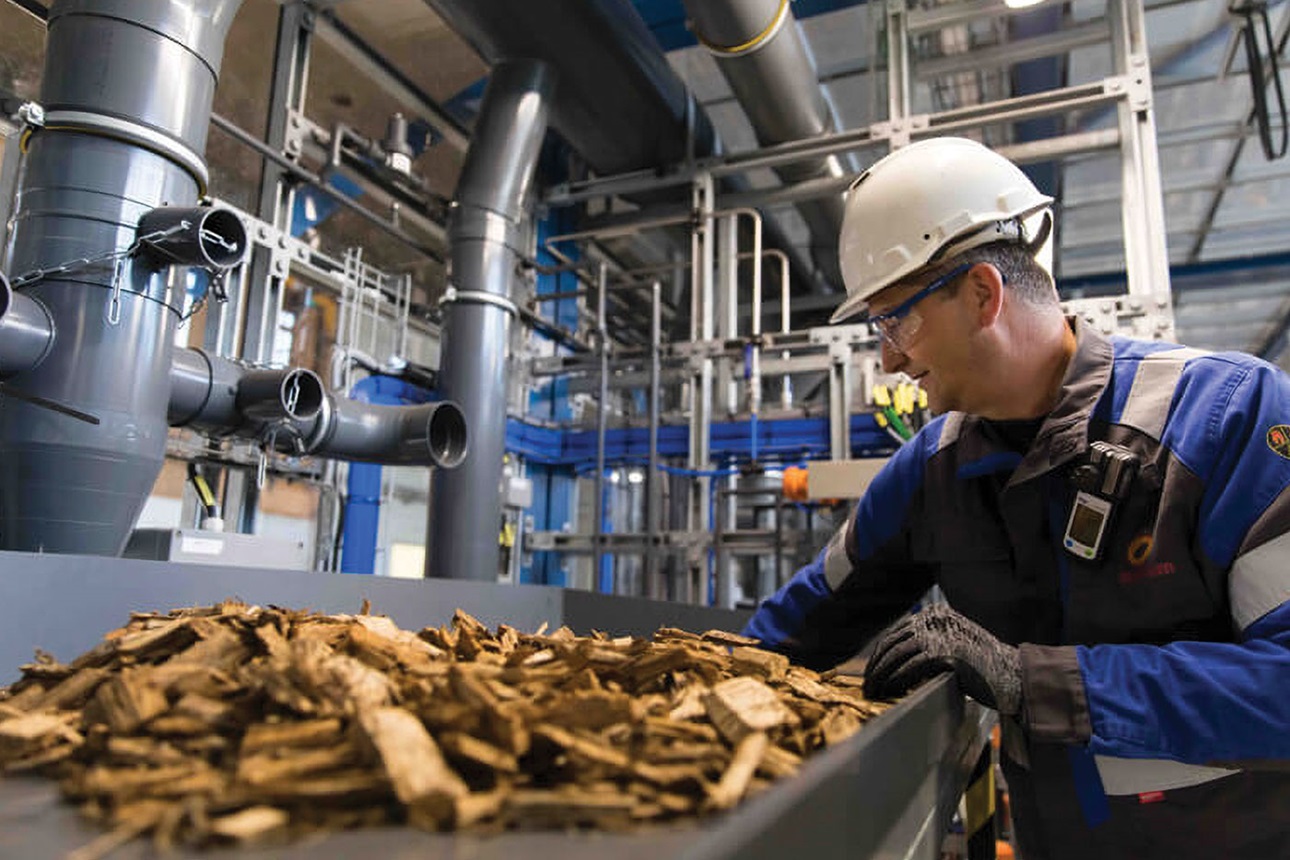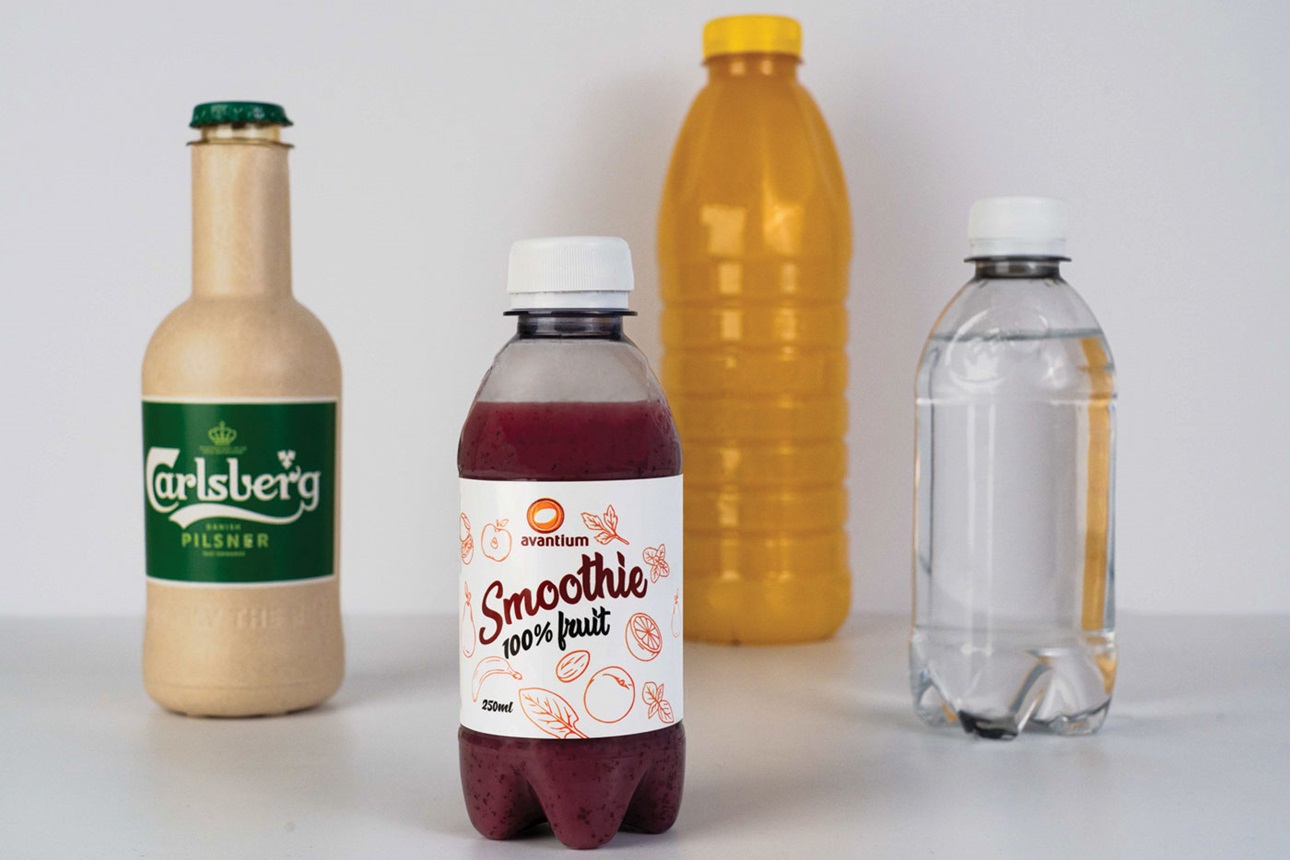A Bright Future for Bioderived Plastic
In this article, readers will find an update on the dynamic use and more recent challenges facing bioderived polymers for food packaging.

Photo courtesy of Avantium
Just over 50% of all bioderived polymers are used for packaging (European Bioplastics 2019). Pricing and usage commitments are spurring growth of these packaging materials, also known as bioplastics or biobased plastics, worldwide at a slow but steady pace, according to the report. As oil prices fluctuate, pricing is driving further traction for bioderived polymers. Brand and retailer commitment to bioderived polymers is part of the United Nations’ Sustainable Development Goal 12.
Bioderived polymers were explored in Food Technology in 2014 and 2018, and these articles can be referenced for an initial review of the technology (Robertson 2014, Robertson and Sand 2018). In this article, readers will find an update on the dynamic use and more recent challenges facing bioderived polymers for food packaging.
The Rationale for Bioderived Plastic
The source of plastic used for food packaging impacts the environment significantly. This is because the source of packaging defines what of Earth’s resources are needed to construct the package as well as what resources are needed to dispose of the packaging. For bioderived polymers, fossil-derived fuel is replaced by biomass to supply the building blocks for polymer synthesis. Examples of biomass are carbohydrates, lignin, and vegetable oils.
Promising bioderived polymers in use today include bioderived polyethylene (bPE), polypropylene (bPP), polyethylene terethphalate (bPET), and the poly(alkylene 2,5-furanoate)s (PAFs) of polyethylene furanoate (PEF) and poly(trimethylene 2,5-furandicarboxylate) (PTF). It is important to note that although these materials are bioderived, they are designed for recycling and reuse. Thus, these bioderived materials are part of a more sustainable circular economy, whereas composted or biodegraded materials inherently are not part of the circular economy.
Promising Bioderived Plastics
Five bioderived polymers—bPE, bPP, bPET, PEF, and PTF—continue to advance and gain popularity for use as barrier polymers in the food industry. This is primarily due to the fact that they are “drop-in” solutions that can be substituted for the fossil-derived versions of polymers currently in use (bPET, bPE, and bPP), or have superior water vapor and oxygen permeability and mechanical properties (PEF and PTF) that make them viable for food packaging. Furthermore, they are all recyclable.
bPE and bPP. bPE leads the “drop-in” biopolymer market, whereas bPP use is about 10% in packaging. Both polyolefins are synthesized from ethylene monomer by dehydrating bioethanol obtained from glucose. When bPE is made from sugarcane and sugarcane fiber (bagasse), ethanol is obtained from the anaerobic fermentation of the sucrose in the sugarcane juice. Water in the ethanol is then removed via distillation, resulting in an azeotropic solution of 95.5% hydrous ethanol and 4.5% vinasse, often used as a fertilizer. After this, the polymerization process proceeds in the same way that ethylene is used when derived from petroleum. Braskem, Dow-Crystalsev, Solvay, Nova Chemicals, and Petrobras are suppliers of bPE. Likewise, bPP can be derived from distillation, fermentation, and conversion. Both are used in flexible and rigid packaging.
Biobased PET. This material was first used in 2009 by Coca-Cola in its trademarked PlantBottle, which is made of 30% biobased monoethylene glycol (MEG) and 70% fossil-based terephthalic acid (TPA). In October 2021, Coca-Cola announced that the first-ever beverage bottles made from 100% bioderived PET were produced in a limited run of approximately 900 prototype bottles. The prototypes were manufactured using technology partner Virent’s process that catalytically converts hydrogen and sugars into an intermediate feedstock—bio-paraxylene—used to produce TPA.
With more than 15 global suppliers, biobased paraxylene is projected to rise with a compound annual growth rate of 7.5% by 2030, according to Zion Market Research, and thus, 100% bPET is expected to become more common. The global biobased PET market size was valued at $441.3 million in 2021 and biobased PET accounts for almost 10% of the annual EU production of PET, according to Allied Market Research. The use of 100% bPET is advancing rapidly, aided by joint ventures such as the Nestlé, ENEOS, and Mitsubishi Corp.’s partnership with the Japanese beverage brand Suntory. Another recent example of bPET implementation is the Toray Plastics dual ovenable LumiLid that uses 50% bPET in conjunction with a biobased adhesive. Suppliers include Anellotec, Arkema, ExxonMobile, Ineos, SCG Chemicals, Teijin, Tianan Biologic Materials, and Toyota Tsusho Corp.
PAFs of PEF and PTF. These bioderived polymers are based on 2,5-furandicarboxylic acid. Due to its enhanced gas barrier, improved thermal stability, and better mechanical strength, PEF is used as a replacement for or to enhance lower barrier materials. Interestingly, patents for both PET and PEF were filed more than 75 years ago in 1946. PEF is a polyester that consists of repeating units of furan rings connected by ethylene glycol with the repeating chemical nomenclature of C10H8O6 (Loos et al. 2023). The carbon dioxide permeability of PEF is 30 times better than PET, which has made PEF of particular relevance to the carbonated beverage industry (nova-Institute 2022).
PEF has been produced for more than 12 years and Avantium has had an 80,000 lb/yr (36,000 kg/yr) pilot plant for PEF since 2012. Current producers of PEF include Avantium, Synvina, and Toyobo. Current uses of PEF include the following:
- Carlsberg’s Green Fiber Bottle paper-based bottle is made from wood fiber and lined with a thin layer of PEF. It was released in limited quantities in select markets.
- Danone’s evian+ flavored mineral water beverage is packaged in 100% recycled PET with a small amount of PEF. The PEF is used as a barrier layer to protect the product from light and oxygen.
- Avantium’s Dawn Technology for ready-to-drink tea and coffee beverages are PEF bottles. Avantium is currently in the process of scaling up production of the bottles.
- PepsiCo’s Green Bottle is used for Tropicana brand in select markets.
PTF, also known as poly(tri-methylene 2,5-furan dicarboxylate), is being advanced by DuPont in conjunction with Tate & Lyle in a Tennessee-based joint venture in which they are reacting FDME with 1,3-propanediol. The superior permeability of PTF reflects hydrogen bonding and the coupling of helical furan rings resulting in a highly ordered amorphous state (Galvez et al 2023).
Both PTF and PEF could replace multilayer packaging and impart barrier properties in the nano or microfilm state to improve poor low-cost barriers such as cellulose films. Both can be recycled at a 2% level with PE, and mechanical recycling (gridding, shredding, melting) and chemical recycling (depolymerization into monomers or oligomers that can be re-polymerized) are viable. And near infrared-aided sorting can be used to separate them from other polymers for more efficient recycling.
Challenges Ahead
Among the biggest challenges to the growing bioderived polymers market is feedstock sustainability dynamics. When plastics are derived from former cropland, forest issues of biodiversity loss, water use, and land use and the callous nature of using food crops to produce plastics arise. For this reason, the sustainability of all derived polymers, including recyclable and biodegradable bioderived polymers, drastically improves when crops (wheat, corn, beets) are replaced by agricultural waste as feedstock.
The amount of land used for bioplastic production is projected to be at 0.021% of total agricultural land in 2024 (European Bioplastics 2020). As with upcycled food, waste from packaging production is being upcycled. For example, lignocellulose does not compete with food with respect to starch and sugar crops, but more processing steps are required. Advances in this area include using lignin, a byproduct used in paper-based packaging, and subsequent distillation to extract sugars to derive MEG, a building block of some bioderived barrier polymers. Likewise, Anellotech has developed high-purity bio-based paraxylene from pine wood. And stretching this concept, ethylene and propylene can be derived from the hydrogenation of CO2. From a pricing standpoint, bPE pricing fluctuates with gas prices since it competes with bioethanol car fuel derived from corn feedstock.
In addition, many bioderived materials require more research and investment. Much of food is processed by retort, high-pressure processing, or microwave-assisted thermal sterilization while the food is within the package or filled at aseptic and hot-fill temperatures. While bPE and bPP behave the same as their non-bioderived counterparts, the compatibility of PEF, PTF, and other new biopolymers with processing technology is an area of much-needed research.
Sadly, much of food packaging research focuses on bioderived polymers derived from food sources such as cellulose, mushrooms, seaweed, and milk and zein proteins. These are easily developed at lab and pilot scale; however, they lack implementation promise and are not viable as replacement packaging for three reasons:
- They lack the permeability and mechanical qualities required in the food industry’s highly efficient food manufacturing and distribution systems.
- Inferior permeability and mechanical properties necessitate the use of thick layers, which translates to additional packaging and higher resource use.
- Using food or food waste to produce packaging that is ineffective in preserving food that will then create more food waste is intrinsically nonsensical and callous. These food-derived coatings are best employed as ingredients and processing aids in the form of food coatings to impart taste, antimicrobials, and antioxidants, and to inhibit freezer burn. A shift in food packaging research toward bioderived plastic that can be recycled is needed to advance more sustainable packaging.
Finally, the packaging industry will need to address labeling challenges. Many consumers view polymers as being from fossil fuels. Thus, consistent consumer education is needed to inform the public that polymers can be made from bioderived renewable or regenerative sources and can be recycled.ft








